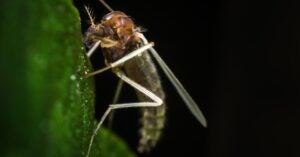Epizootic Hemorrhagic Disease, a common viral disease in deer populations, was first detected in October of 2022 in Europe. The disease’s appearance and the lack of prophylactic measures have continued to be an economic concern — especially for Zamoran ranchers dealing with a severe outbreak in Spain.
EHD primarily affects white-tailed deer, mule deer, and other cervids. It is transmitted by biting midges such as gnats, sand flies, or no-see-ums (Culicoides spp.) and can cause significant morbidity and mortality in affected deer.

While the disease does not affect people or food safety, the threat to wildlife and livestock, and the potential for trade restrictions could prove costly.
In August, the Ministry of Agriculture, Livestock, and Sustainable Development of Spain confirmed 12 outbreaks of EHD on livestock farms in Extremadura, a community in Spain.
EL PAIS reports a severe outbreak in Zamora, Spain, where a rancher named Fernando Vicente tearfully explained the situation.
“Animals are dying constantly — we’ve gone from collecting four carcasses a day to over 30,” said Vicente, who hopes government officials will step up and send veterinarians to help. “It’s like COVID — it affects each animal differently. We’ve never seen anything like this.”
According to the UK’s Department for Environment, Food, and Rural Affairs, over 150 outbreaks have now been recorded in Spain, Portugal, and Southern Italy.
According to new sources, scientists from France’s National Social Security Administration who are monitoring the disease’s spread believe affected midges were transported from Sardinia across the Mediterranean by the wind.
EHD was first identified in the U.S. in the 1950s but has since spread to parts of Africa and the Middle East. Outbreaks tend to be seasonal, with increased activity during warmer months when midges are more active.
No vaccines are available to treat EHD in cattle in Europe. However, vaccines have been tested in the U.S. and Japan. In the U.S., autogenous inactivated vaccines were developed for captive wildlife deer farmers. Veterinarians have prescribed anti-inflammatory medications and antibodies to help prevent secondary infections.
Insecticides and repellents on cattle, facilities, and vehicles and limiting transportation of livestock may also help prevent the disease from spreading.
Symptoms of infected cattle include fever, weakness, lack of appetite, weight loss, difficulty swallowing, and a rash on the udder.
»Related: 10 weird livestock diseases, syndromes, and what to look for


